 W
WAscaric, a Visigoth, was the fourth known Bishop of Palencia from about 639 to about 673. He only appears as a signatory of the canons of the Eighth Council of Toledo in 653. A local tradition, however, places him at the side of king Wamba during the Septimanian rebellion of Paul and Hilderic in 672. To Ascaric is sometimes credited the reedification of Palencia and the deposition of the relics of Antoninus of Pamiers in the Crypt of San Antolín.
 W
WBrunhilda was queen consort of Austrasia, part of Francia, by marriage to the Merovingian king Sigebert I of Austrasia, and regent for her son, grandson and great grandson.
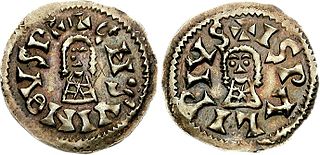 W
WChindasuinth (also spelled Chindaswinth, Chindaswind, Chindasuinto, Chindasvindo, or Khindaswinth was Visigothic King of Hispania, from 642 until his death in 653. He succeeded Tulga, from whom he took the throne in a coup. He was elected by the nobles and anointed by the bishops on April 30th, 642.
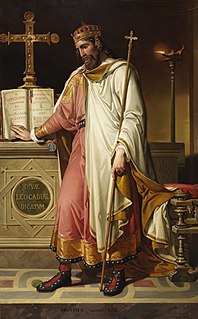 W
WChintila was a Visigothic King of Hispania, Septimania and Galicia from 636. He succeeded Sisenand in a time of weakness and reigned until his death.
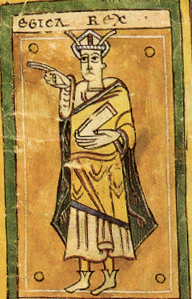 W
WEgica, Ergica, or Egicca, was the Visigoth King of Hispania and Septimania from 687 until his death. He was the son of Ariberga and the brother-in-law of Wamba.
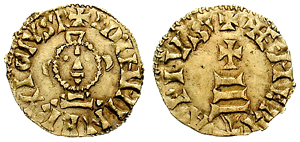 W
WErwig was a king of the Visigoths in Hispania (680–687).
 W
WSaint Florentina is venerated as a saint by the Catholic Church. Born towards the middle of the sixth century in Cartagena, Hispania, she and her family were actively engaged in furthering the best interests of Christianity.
 W
WSaint Fructuosus of Braga was the Bishop of Dumio and Archbishop of Braga, a great founder of monasteries, who died on 16 April 665. He was the son of a Visigothic dux in the region of Bierzo and at a young age accompanied his father on official trips over his estates. After a period spent as a hermit, he established a monastery at Complutum and became its first abbot.
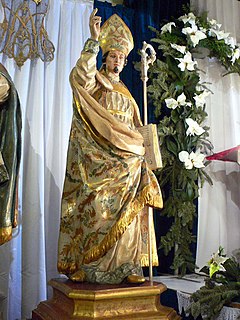 W
WSaint Fulgentius of Cartagena, born in Cartagena in the 6th century and died in 630, was Bishop of Ecija (Astigi), in Hispania.
 W
WGundemar was a Visigothic King of Hispania, Septimania and Galicia (610–612).
 W
WHelladius, Eladio or Elladio of Toledo was a Christian archbishop. Born into a Visigothic noble family in Spain, he initially held important positions at court but was attracted to the monastic life and took his vows at the Agali monastery. He became its abbot and later archbishop of Toledo. The Roman Martyrology gives his feast as 18 February.
 W
WSaint Ildefonsus or Ildephonsus was a scholar and theologian who served as the metropolitan Bishop of Toledo for the last decade of his life. His Gothic name was Hildefuns. In the Ethiopian Orthodox Tewahedo Church he is known as Saint Dexius based on the Ge'ez translation of the legends about his life.
 W
WSaint Irene of Tomar was a Christian who was martyred for her faith in Visigothic Portugal. Her parents, wishing to protect her, sent her to a convent school and a private tutor. The only times she left her house was to attend Mass or pray at the sanctuary of Saint Peter. The legend of her life is possibly little more than that.
 W
WIsidore of Seville was a scholar and, for over three decades, Archbishop of Seville. He is widely regarded, in the oft-quoted words of the 19th-century historian Montalembert, as "the last scholar of the ancient world".
 W
WLiuva II,, son of Reccared and possibly Baddo, was Visigothic King of Hispania, Septimania and Galicia from 601 to 603. He succeeded Reccared at only eighteen years of age.
 W
WReccared I was Visigothic King of Hispania and Septimania. His reign marked a climactic shift in history, with the king's renunciation of Arianism in favour of Catholicism in 587.
 W
WReccared II, was Visigothic King of Hispania, Septimania and Galicia briefly in 621, though the length o the reign exactly is debated to last from several days to just over a year. His father and predecessor was Sisebut and his mother was Sisebut's second wife, the bastard daughter of Reccared I by Floresinda. He was but a child when placed on the throne and as with most Visigothic attempts to establish a royal dynasty, Sisebut's was opposed by the nobility and ultimately failed.
 W
WRecceswinth, also known as Reccesuinth, Recceswint, Reccaswinth (English), Recesvinto, Rekkeswint (German), Réceswinthe (French), Recceswinthus, Reccesvinthus, and Recesvindus (Latin), was the Visigothic King of Hispania, and Septimania in 649–672. He ruled jointly with his father Chindaswinth until his father's death in 653.
 W
WRuderic was the Visigothic king in Hispania between 710 and 712. He is well-known as "the last king of the Goths". He is actually an extremely obscure figure about whom little can be said with certainty. He was the last Goth to rule from Toledo, but not the last Gothic king, a distinction which belongs to Ardo.
 W
WSisebut was King of the Visigoths and ruler of Hispania and Septimania from 612 until his death.
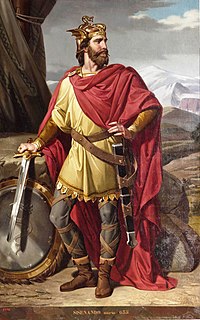 W
WSisenand was a Visigothic King of Hispania, Septimania and Galicia from 631 to 636.
 W
WSuintila, or Suinthila, Swinthila, Svinthila; was Visigothic King of Hispania, Septimania and Galicia from 621 to 631. He was a son of Reccared I and his wife Bado, and a brother of the general Geila. Under Suintila there was an unprecedented peace and unity across the Kingdom of the Visigoths. As a direct result, by 624 the king was able to muster the forces necessary to retake those lands that had been under the control of the Eastern Roman Empire.
 W
WTulga or Tulca was Visigothic King of Hispania, Septimania and Galicia from 640 to 642, if his father died in December 640, as some sources state. Other sources have his rule beginning as early as 639 or ending as early as 641. He came after his father Chintila in another vain attempt to establish dynastic kingship.
 W
WWamba was the king of the Visigoths from 672 to 680. During his reign, the Visigothic kingdom encompassed all of Hispania and part of southern Gaul known as Septimania.
 W
WWitteric was the Visigoth King of Hispania, Septimania and Galicia. He ruled from 603 to 610.
 W
WWittiza was the Visigothic King of Hispania from 694 until his death, co-ruling with his father, Egica, until 702 or 703.